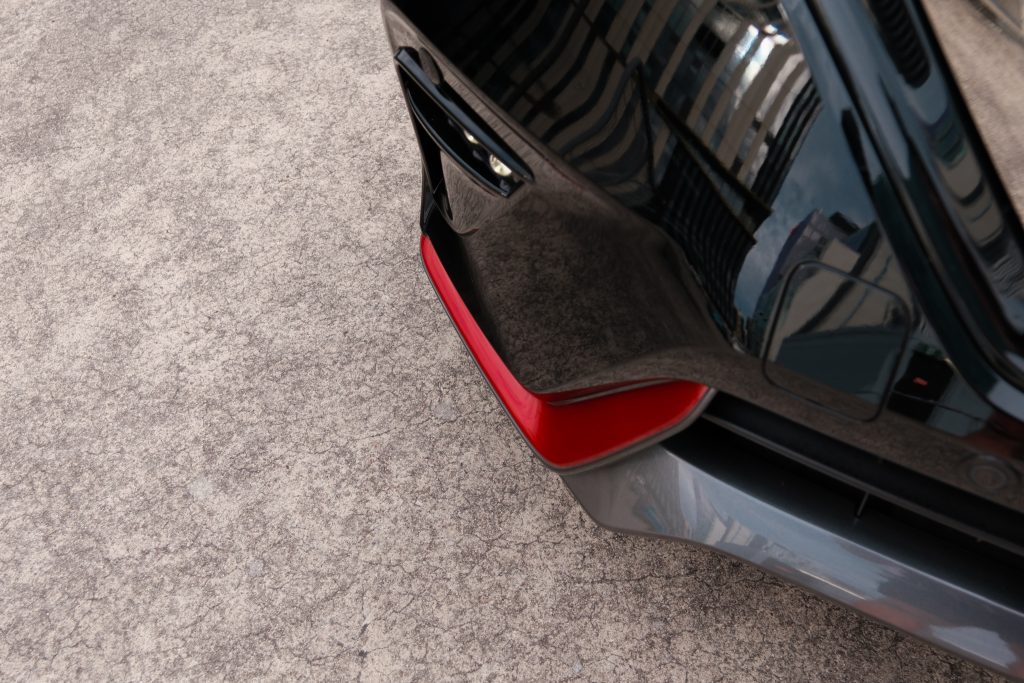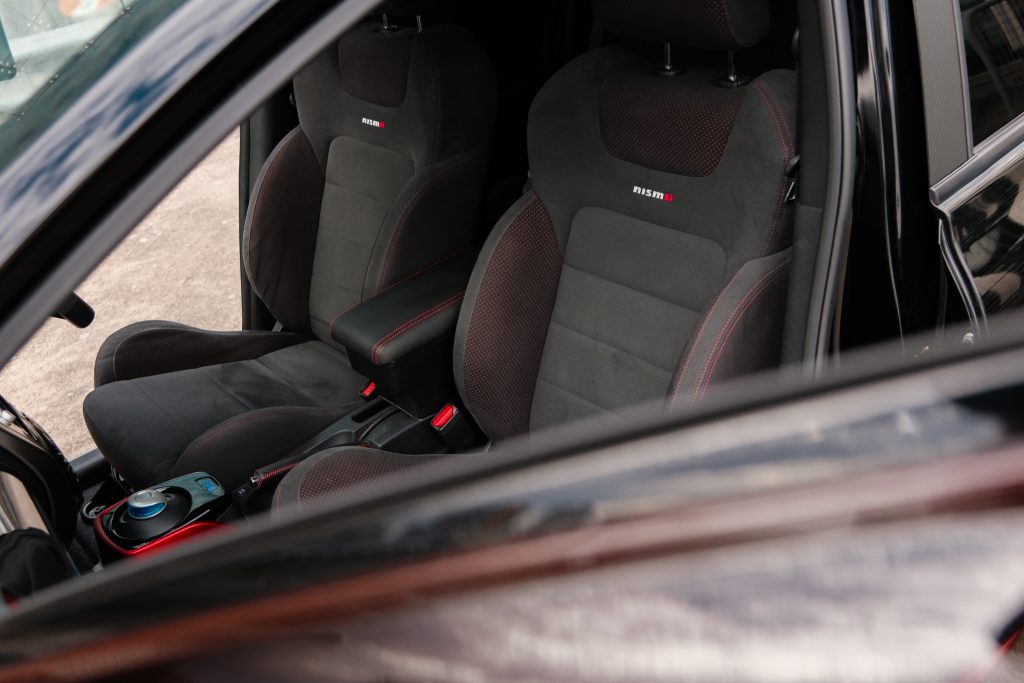With interest in electric vehicles increasing during the COVID winter, it was obvious that it was a niche I needed to explore, even if just from a business standpoint. But how could I sell EVs if I didn’t have my own personal experience with owning one?
I’m sure many of you reading this have fairly firm views on EVs one way or the other. I am involved in a number of EV groups and associations, whose members believe, with religious zeal, EVs will fix all the world’s problems. Conversely, I often see posts from so-called car enthusiasts that EV cars are the devil and all spontaneously combust, and how digging minerals out of the ground makes EVs worse than ICE vehicles, completely ignoring the fact that ICE vehicles use plenty of the exact same source materials. To be frank, I find the two extremes equally as annoying.
In the middle sits the EV-curious: people who are open to the idea that an EV is good for the planet and also good for their finances, and are prepared to give it a go if the buy-in price is reasonable and if they have heard first-hand experiences from people they know and trust.
I sit in this realm, understanding that many others will feel the same way, hence we circle back to the question in the first paragraph. I don’t profess to be an EV expert, which can often be a blessing when speaking to the EV-curious. They may not yet have an understanding of battery health, or V2G, or cable types, or other technicalities. They are interested in how they can closely replicate their current ICE vehicle ownership experience but also save money week-to-week.
To truly reap the benefits, EVs are best paired with rooftop solar panels (and potentially a home battery set up) that can juice up your car with free electrons during the day. The problem is, for at least a third of Australian households – those who are renting – this is not an option, nor is installing a fast charger setup. Renters are restricted to “granny charging” at home; plugging straight into a domestic power socket, and waiting hours to fully recharge. When combined with our BS high electricity prices, the average charge from empty to full costs around $17, and using a public charging station would be higher again. While running costs are still well below those of an ICE vehicle, these sorts of dilemmas are enough to sow seeds of doubt in the minds of the EV-curious.
This is, of course, a very long-winded explanation for why I ended up purchasing a Nismo Note. Initially, I was looking at a Nismo Leaf, but with a buy-in price of more than $30K at the time, it was more than I wanted to spend just for the EV experience, and buying a generic Leaf felt a little too ‘normy’ for my tastes. Two things drew me to the Note. The first is that it is a range-extender hybrid, which means that, for the most part, the driving experience mimics that of an electric vehicle, with the ICE acting as an on-board battery charger rather than being directly connected to the wheels. Secondly, Nismo has come a long way down from the Z-Tune era, with its moniker being reduced to trim, wheel and bodykit packages in modern times, but that aside, I figure if I’m going to buy a hybrid, I should at least make it a Nismo one!

After looking around for a bit, I discovered there was a Nismo S version that bumped the usual 80kW motor up to 100kW, but being $5K dearer at the time, I decided it wasn’t worth the jump, given I only wanted it for a runabout around town. Eventually I found a grade 5A, 42,000km example at auction which had a stack of extra Nismo accessories, as well as some neat 17” Rays wheels, HKS suspension and a few other goodies. I paid a little over the odds but given the condition and the low kilometres, it was exactly what I was looking for.

Driving impressions
The Note is quite an amusing driving experience for those not used to EVs. The generator engine (the 1.2 litre HR12DE three cylinder) will fire up just to go through its warm up cycle on a cold start, but when it’s warm, starting up the car will result in nothing at all apart from showing you on the dash that the car is good to go.
Throttle response is instant, with all the electric motor’s torque available from standstill, which makes for hilarity at the lights. The Note will get the jump on pretty much any ICE-powered vehicle, but only to the other side of the intersection, at which point it will usually get demolished. But for those 20m or so, you can be a god. Just lift off and claim victory.
One of the best things about the Note’s hybrid set-up is that it has varying levels of “regen” (battery regeneration) where the car uses the energy on deceleration to top up the battery rather than being wasted via braking. There are three driving modes available. The first is Normal, which combines a regular throttle response with light regen. The second is Eco mode, which absolutely kills any form of acceleration, and has more aggressive regen. Eco mode is genuinely one of the saddest driving experiences. It’s not worth the extra 30km or so range you will squeeze from a tank of fuel. Seriously, don’t do it.
My car sits permanently in Sport mode, for two very important reasons. Firstly it gives the most aggressive throttle map, and secondly it also has the most aggressive regen. This makes for a whole lot of fun and also means that you can genuinely drive the car in single-pedal mode, where (if you time it just right) you can use the regen to pull to a complete stop without having to use the brakes and without having to hold the car on the brakes at the lights. If you brake normally to a full stop, the car will revert to acting like a normal auto, with built in trans creep, so I quickly found myself getting annoyed whenever I had to keep my foot on the brake while stationary.
Of course, if you want to hustle your Nismo Note through the hills, find the tightest corners and have a blast. Single-pedal mode comes into its own again here; it’s like the old days of playing GT on easy mode where the car would brake whenever you lifted off the throttle. Being a relatively small car with a low centre of gravity, instant throttle response and no need to move your foot off the throttle pedal, twisties are point-and squirt heaven. Entered a corner a bit too hot? A dab of the brakes is all that’s needed. What’s more, the aggressive regen gives Sport mode better fuel range than Normal does. On one memorable hard run down Norton Summit Road (for those in SA), the range left was actually higher at the bottom than it was when I began at the top!
Now to the other big question: what is the fuel economy like? Low enough that I never tend to bother following fuel price cycles, because the tank is so small and needs filling so rarely that paying top dollar will hardly make a dent in my wallet. The Note is first and foremost a city car, so it’s no surprise that it’s more thrifty around town than on the open road. Over the two years I’ve owned mine, I’m averaging 4-5L/100km in start-stop driving, which is pretty decent. Ignore the manufacturer’s claim of 1200km on a tank, but 800km from 35L of fuel isn’t impossible to achieve. Even better, there is no advantage in using premium fuel because the motor isn’t connected to the wheels – plain old 91 octane works fine. One small caveat is to be religious with servicing, as the start-stop cycling of the engine in normal driving places unique demands on its oil.
Inside, the Nismo Note is a pretty nice office. There’s a heap of headroom, for those north of 180cm. The factory bucket seats do the job just fine, and while Note can be optioned with gorgeous Recaro seats, they are sized for their local market rather than chonky Australians. Big bois stick to the standard pews. The steering wheel is nicely sized and weighted and it comes with the usual radar-based ESC and safety tech. Mine came with a built-in factory dash cam which was fiddly and therefore never got used. Ditch the glitchy factory double-DIN head unit and replace it with the latest tech. The hockey-puck shaped gear selector initially seems weird, but very quickly becomes second nature.

My only other real annoyance has been the headlights. The Nismo Note comes with excellent LED low beam headlights, but there is a special place in hell for manufacturers who team them up with halogen high beam bulbs. Obviously high beams don’t get used often in Japan, so unsurprisingly, they suck. What’s more, the Nismo kit has a nice strip of LED driving lights in the front bar that somehow don’t operate as DRLs, instead only switching on with the headlights. AND, the bulb colours don’t match! The whole setup is a frustration, and the car deserves so much better.
Good points
- Uses its 80kW to full effect, especially off the line at traffic lights
- Deceptively quick on tight hills roads; capable of embarrassing far more powerful cars
- Sips fuel like a pensioner drinking a shandy at the pub. Don’t be surprised if you’re only filling up once a month.
- Only needs 91 octane fuel
- Single pedal driving in sports mode is the shizzle
- Great throttle response and steering wheel
- Stacks of headroom
Bad points
- Halogen high beams. Ditch them for aftermarket LED bulbs that are the same colour as the very nice low-beam LEDs
- The excellent radar cruise control is optional and hard to find
- The Nismo Note has the same power as the standard model, so if you can afford it, buy the Nismo S that tips in a rather significant extra 20kW
- Throw the head unit in the ocean and replace it with something decent
PS: I had plans to publish this review before I sold my Note, but it shuffled off to its new home in Canberra back in February. This meant a fitting final 1200km drive to deliver it in person, of course. While not its preferred driving environment, the Note, unsurprisingly, didn’t skip a beat, averaging 6.5L/100km for the trip. So instead, enjoy these gorgeous photos from Troy Barker at TJB Photo.
Note to NSW Transport: the road between Balranald and Hay is absolute dogshite. The ruts were so bad I had to straddle the peaks so I didn’t bottom out.


















